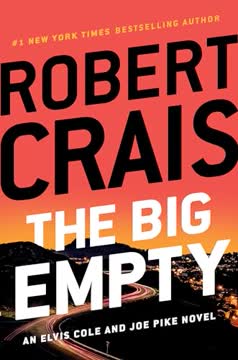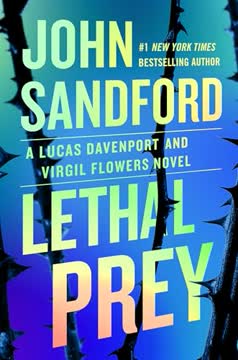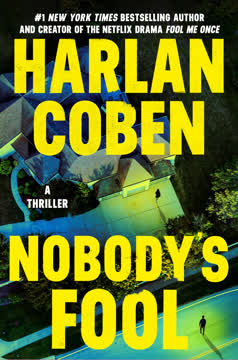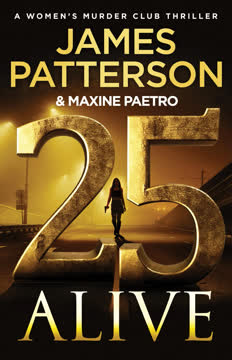Plot Summary
Night Drop at Acu-Care
In the dead of night, a security camera at the failing Westside Acu-Care Hospital captures a hooded man dumping a swaddled, lifeless body. LAPD Lieutenant Milo Sturgis and psychologist Alex Delaware are called in. The hospital's history is checkered—once an abortion clinic, then a rehab, now a barely functioning acute care center. The victim is a young woman, and the investigation is hampered by poor security, a missing guard, and a lack of witnesses. The scene is clinical, impersonal, and the only clues are the methodical way the body was left and the care taken to avoid identification. The case is immediately odd, with the victim's identity and the motive for her death shrouded in secrecy.
The Unnamed Victim
Fingerprints identify the victim as Marissa French, a 25-year-old aspiring actress and part-time caregiver. Her online presence is filled with glamorous photos, but her real life is less charmed—she floats between jobs, hoping for a break. The last image of her, posted hours before her death, shows her with a much older, muscular man—Paul O'Brien—who exudes predatory confidence. Marissa's friends describe her as sweet but increasingly distant, obsessed with her acting dreams and vulnerable to manipulation. The investigation pivots to her social circle and the mysterious man in the final photo.
Marissa's World Unveiled
Delaware and Sturgis interview Marissa's friends—Tori, Beth, Bethany, and Yoli—who reveal a world of "hot girl" party lists, boutique openings, and the constant pressure to be seen. Marissa, once religious and sheltered, is now adrift, her mother dead, her father absent, and her only family an aunt she barely knows. The friends recall Marissa's excitement about meeting a "producer" who promised her a real acting role. They warned her, but she was determined. The group's dynamic is fractured by jealousy, ambition, and the predatory men who circle their world. The friends' testimonies paint Marissa as both a dreamer and a target.
The Producer in Red
The man in Marissa's last photo is identified as Paul O'Brien, a failed stuntman and bouncer with a history of exploiting women. Surveillance and social media place Marissa and O'Brien together at a party the night she died. O'Brien's pattern emerges: he drugs women, takes them home, and discards them when things go wrong. His roommate, Marty Kehoe, describes O'Brien's predatory behavior and the parade of unconscious women he carried out of their shared apartment. The evidence points to O'Brien as Marissa's killer, but before he can be arrested, he is found dead—shot with a sniper's precision.
Friends and Fractures
Marissa's friends are devastated but not surprised by her fate. The investigation into O'Brien's death reveals a web of connections: he worked security for Gerald Boykins, a wealthy ex-gangster turned music producer, and had ties to the same party circuit as Marissa. The detectives consider whether O'Brien's murder is revenge for Marissa or another of his victims. Meanwhile, the case expands as another body is found—Jamarcus Parmenter, a rapper with a violent past, killed months earlier by the same rifle. The pattern of targeted, precise killings begins to emerge.
O'Brien's Final Party
The sniper's third victim is Whitney Killeen, a single mother shot while boating with her toddler in a secluded Ventura lake. The murder is professional, the motive unclear. Her ex, Jay Sterling, is a plausible suspect due to a bitter custody battle, but he has an alibi. The detectives realize the sniper is a contract killer, hired to solve personal grievances. The cases—Marissa, O'Brien, Parmenter, and Killeen—are linked by the same weapon, but the clients and motives differ. The investigation turns to the families and associates of the victims, searching for connections.
The Sniper's Signature
The detectives discover that all the victims are connected through a network of high-achieving, anxious families and their children. A new victim, Emmanuel Rosales, a beloved high school teacher, is killed in his backyard. The sniper's modus operandi of precision and the lack of forensic evidence point to a highly skilled, calculating killer. The team uncovers a pattern: the victims are either predators themselves or obstacles to the ambitions of others. The sniper is not just a hired gun but someone who believes in a twisted form of justice.
Three Deaths, One Rifle
Ballistics confirm the same .308 rifle was used in all the murders. The detectives map out the victims' lives and find a common thread: a math tutor named Cameron Flick, who has worked with the children of several families involved in the cases. Flick is a former math prodigy, dismissed from graduate school for lack of originality, now making a lucrative living as a private tutor. His students are the children of the wealthy and ambitious, and he has access to their families' secrets and frustrations.
The Math of Murder
Flick's background reveals a history of violence: as a teenager in Ohio, he was likely responsible for two unsolved sniper killings. His psychological profile is chilling—he is a narcissist who sees himself as a righteous avenger, eliminating those who threaten his students or offend his sense of order. He is methodical, patient, and derives sexual satisfaction from the planning and execution of his crimes. The detectives realize Flick has inserted himself into the lives of his clients, offering not just academic help but a deadly solution to their problems.
The Avenger's Pattern
The investigation uncovers that Flick's victims were targeted on behalf of his students or their families—sometimes at their request, sometimes on his own initiative. He kills to "protect" the children of the elite, to punish those he deems unworthy, and to assert his own superiority. The families, whether complicit or ignorant, are tainted by their ambition and willingness to look the other way. Flick's crimes are both personal and professional, a perverse extension of his role as a tutor and mentor.
Family Ties and Motives
As the detectives close in, they confront the families involved. Some are devastated to learn the truth; others are relieved that their problems have been "solved." The investigation exposes the dark side of parental ambition, the pressure on gifted children, and the ease with which privilege can buy silence or violence. Flick's own family history is one of abuse, neglect, and early violence, fueling his sense of grievance and entitlement. The detectives grapple with the moral ambiguity of the case—who is truly responsible, and can justice ever be complete?
The Tutor's Secret Life
Flick is arrested after a tense surveillance operation. In custody, he is arrogant, contemptuous, and convinced of his own genius. He taunts the detectives, insisting he is a hero, not a villain, and that his actions were justified. His files reveal meticulous planning, a cold detachment, and a belief in his own moral and intellectual superiority. The families he "helped" are left to reckon with the consequences of their complicity or ignorance. Flick's downfall is not just legal but psychological—when confronted with his academic failures, he unravels.
The Trap is Set
Flick's trial is a spectacle of ego and delusion. He fires his lawyers, insists on representing himself, and tries to manipulate the proceedings. The detectives and Delaware see through his facade, exposing his insecurities and failures. Flick's self-image as a genius and avenger crumbles under scrutiny. In the end, unable to face the reality of his mediocrity and the certainty of punishment, Flick takes his own life in jail, leaving behind a trail of victims and unanswered questions.
The End of Genius
With Flick dead, the cases are officially closed, but the detectives and Delaware are left unsettled. The families of the victims and the clients are scarred, some relieved, others haunted by guilt. The investigation has exposed the dark underbelly of privilege, ambition, and the desire for control. Delaware reflects on the nature of justice, the limits of law, and the enduring pain of loss. The story ends not with triumph but with a somber recognition of the complexity of human motives and the cost of genius gone wrong.
Characters
Alex Delaware
Alex Delaware is a clinical psychologist who consults for the LAPD. He is analytical, compassionate, and deeply attuned to the psychological undercurrents of crime. Delaware's role is to provide insight into the motives and behaviors of both victims and perpetrators. He serves as the reader's guide through the labyrinth of ambition, trauma, and violence that defines the case. Delaware's own history of overcoming adversity informs his empathy, but he is not immune to the emotional toll of his work. His relationship with Milo is one of mutual respect and intellectual partnership.
Milo Sturgis
Lieutenant Milo Sturgis is a seasoned LAPD homicide detective with a reputation for tenacity and a high solve rate. He is gruff, pragmatic, and often frustrated by bureaucracy and the limitations of the law. Milo's partnership with Delaware is central to the narrative—he relies on Alex's psychological insights to see beyond the surface of the crimes. Milo is haunted by the suffering he witnesses and is driven to protect the vulnerable, even as he struggles with the moral ambiguities of his cases.
Cameron Flick
Cameron Flick is the antagonist—a former math prodigy whose academic failures and childhood trauma have warped his genius into a weapon. Flick is methodical, patient, and sees himself as a righteous avenger, eliminating those who threaten his students or offend his sense of order. He is sexually aroused by the planning and execution of his crimes, and his need for control and admiration drives him to insert himself into the lives of the elite. Flick's downfall is his inability to accept mediocrity and his compulsion to prove his superiority, even as it leads to his destruction.
Marissa French
Marissa is a young woman caught between her dreams of stardom and the harsh realities of Los Angeles. She is sweet, naive, and increasingly isolated as she chases elusive opportunities. Marissa's vulnerability makes her a target for predators like O'Brien, and her death is both a personal tragedy and a catalyst for the unraveling of the case. Her friends' grief and guilt highlight the dangers faced by young women in a world that commodifies beauty and ambition.
Paul O'Brien
O'Brien is a physically imposing man with a history of exploiting women. He is charming on the surface but deeply manipulative and dangerous. His pattern of drugging and discarding women makes him a suspect in Marissa's death, but he is himself killed by the sniper. O'Brien's life and death exemplify the cycle of predation and retribution that runs through the novel.
Gerald Boykins
Boykins is a former Crip turned successful music producer. He is fiercely protective of his daughter Keisha, who is threatened by Parmenter's rap lyrics. Boykins' wealth and connections make him a plausible client for the sniper, but his true involvement remains ambiguous. He represents the lengths to which parents will go to protect their children and the moral compromises of privilege.
Keisha Boykins
Keisha is Boykins' only child, a brilliant student suffering from a chronic illness. Her vulnerability and ambition make her the focus of her parents' protectiveness and Flick's attention. The threats against her trigger the chain of murders, and her story underscores the pressures faced by gifted children and their families.
Jay Sterling
Sterling is Whitney Killeen's ex, embroiled in a bitter custody battle. He is a plausible suspect in her murder but ultimately serves as a red herring. Sterling's story highlights the destructive potential of family conflict and the ways in which ambition and resentment can spiral out of control.
Whitney Killeen
Whitney is a single mother who retreats from the world to protect her son. Her murder is professional and impersonal, a byproduct of the ambitions and grievances of others. Whitney's isolation and the lack of clear motive for her death reflect the randomness and collateral damage of violence.
Emmanuel Rosales
Rosales is a dedicated high school teacher, respected by colleagues and loved by students. His murder is the most senseless, the result of a family's grief and the sniper's warped sense of justice. Rosales represents the ideal of selfless service, destroyed by the very forces he sought to nurture.
Plot Devices
Intersecting Lives and Motives
The novel weaves together the lives of victims, suspects, and investigators, using overlapping social circles, family dynamics, and professional networks. The sniper's victims are connected not by direct relationships but by the ambitions, grievances, and vulnerabilities of those around them. This structure allows for a complex exploration of motive and consequence, as each character's actions ripple outward, affecting others in unexpected ways.
The Outsider's Perspective
Alex Delaware's role as an outsider—both to the police and to the elite families he investigates—provides a unique lens through which to view the case. His empathy and analytical skills allow him to see patterns and motives that others miss, and his reflections on justice, ambition, and trauma deepen the narrative's psychological complexity.
The Sniper's Modus Operandi
The sniper's killings are marked by meticulous planning, technical skill, and a belief in the righteousness of his actions. The use of a single, precise shot to the neck is both a signature and a statement—a demonstration of control and a claim to moral superiority. The killer's pattern is both personal and impersonal, blending professional detachment with intimate knowledge of his victims' lives.
Foreshadowing and Red Herrings
The investigation is marked by false leads, ambiguous motives, and shifting suspicions. Characters like Boykins and Sterling serve as red herrings, their plausible motives and connections keeping the detectives—and the reader—off balance. Foreshadowing is used to build tension, with early hints of the sniper's psychological profile and the eventual revelation of Flick's identity.
Psychological Analysis and Moral Ambiguity
The novel delves into the psychological motivations of both victims and perpetrators, blurring the lines between innocence and guilt. The families who benefit from the sniper's actions are complicit, whether through direct involvement or willful ignorance. The detectives themselves are forced to confront the limits of the law and the complexity of human motives, leading to an uneasy sense of closure.
Analysis
Last updated:
FAQ
Synopsis & Basic Details
What is Open Season about?
- A Body, A Mystery: The story begins with the discovery of a young woman's body, Marissa French, dumped at a rundown Los Angeles hospital, drawing LAPD Lieutenant Milo Sturgis and consulting psychologist Alex Delaware into a complex homicide investigation. Marissa's life as an aspiring actress, navigating the city's "hot girl" party scene, quickly reveals a world of vulnerability and exploitation.
- Expanding Web of Violence: As the detectives delve deeper, they uncover that Marissa's suspected killer, Paul O'Brien, is himself murdered by a sniper. This second killing, along with two other seemingly unrelated homicides—a rapper and a single mother—are linked by the same .308 rifle, suggesting a methodical contract killer. The investigation expands to connect these disparate victims through a network of wealthy, ambitious families and their children.
- The Tutor's Twisted Justice: Alex Delaware's psychological insights lead the team to Cameron Flick, a brilliant but academically failed math tutor with a history of violence. Flick, who has tutored the children of several victims' families, is revealed to be a narcissistic avenger, using his precision marksmanship to "solve" his clients' problems and protect his "golden" students, all while satisfying his own warped sense of intellectual and moral superiority.
Why should I read Open Season?
- Deep Psychological Thriller: Readers should delve into Open Season for its masterful blend of police procedural and profound psychological analysis, offering a chilling look into the mind of a highly intelligent, yet deeply disturbed, serial killer. Jonathan Kellerman, a clinical psychologist himself, provides unparalleled insight into the motivations behind extreme violence.
- Complex, Intersecting Plot: The novel excels in weaving together seemingly disparate cases—from a dumped body to a sniper's spree—into a cohesive, intricate narrative. The way the lives of victims, their families, and the killer intersect through ambition, privilege, and hidden grievances creates a compelling and unpredictable reading experience.
- Iconic Detective Duo: The enduring partnership between the gruff, pragmatic Lieutenant Milo Sturgis and the empathetic, analytical Dr. Alex Delaware is at its best here. Their contrasting approaches to crime-solving, combined with their deep mutual respect, provide both intellectual rigor and emotional depth to the relentless pursuit of justice.
What is the background of Open Season?
- Los Angeles's Dark Underbelly: The novel is deeply rooted in the geographical and cultural landscape of Los Angeles, exposing the stark contrasts between its glamorous facade and its gritty, often predatory, realities. From the "grimy stretch of warehouses" of Westside Acu-Care to the "tawdry in daylight" Sunset Strip, the city itself becomes a character, a backdrop for ambition, desperation, and violence.
- Socio-Economic Divide & Privilege: Open Season explores the significant socio-economic disparities within LA, highlighting how wealth and privilege can create a sense of entitlement and a willingness to bypass conventional justice. The narrative delves into the pressures on "golden kids" from affluent families, and the lengths parents will go to protect their children's futures, even if it means resorting to illicit means.
- Author's Psychological Expertise: Jonathan Kellerman's background as a clinical psychologist profoundly shapes the novel's themes and character development. His insights into narcissism, trauma, and the rationalization of violence provide a chillingly realistic portrayal of the killer's pathology and the complex emotional landscapes of the victims and their families.
What are the most memorable quotes in Open Season?
- "Beautiful weather always seems cruel when you're dealing with the loss of a human being. But that's L.A., seductive and perverse." (Chapter 1): This quote encapsulates the novel's thematic tension between the city's alluring surface and its underlying darkness, setting a somber tone for the grim discoveries that unfold beneath the California sun. It highlights the inherent perversity of beauty in the face of tragedy.
- "Nothing separates heinous from heroic other than intent." (Chapter 49): Uttered by the killer, Cameron Flick, this chilling statement reveals the core of his twisted ideology, where he rationalizes his murders as acts of "heroism" and "humane slaughter." It forces a disturbing contemplation of how a warped moral compass can justify horrific violence.
- "I'm on a treadmill, Nee, but treadmills can be good exercise for you." (Chapter 9): Marissa French's poignant quote to her friend Bethany, reflecting her relentless, often futile, pursuit of acting dreams. It symbolizes the Sisyphean struggle of many aspiring individuals in Hollywood, highlighting her vulnerability and the exhausting nature of her ambition.
What writing style, narrative choices, and literary techniques does Jonathan Kellerman use?
- First-Person, Empathetic Narration: Kellerman employs a first-person narrative through Alex Delaware, allowing for deep psychological introspection and an empathetic lens on the victims and their circumstances. This choice immerses the reader in Alex's analytical process, making the complex web of motives and connections more accessible and emotionally resonant.
- Procedural Realism & Pacing: The novel adheres to a meticulous police procedural style, detailing the painstaking steps of investigation, from forensic analysis to witness interviews. This realism is balanced by a propulsive, escalating pace, as each new victim and revelation deepens the mystery and heightens the stakes, keeping the reader engaged through twists and turns.
- Dialogue-Driven Characterization: Kellerman masterfully uses dialogue to reveal character, often with subtle subtext and unspoken tensions. Milo's gruff pragmatism, Alex's probing questions, and the varied responses of witnesses and suspects not only advance the plot but also paint vivid portraits of their personalities, fears, and hidden agendas.
Hidden Details & Subtle Connections
What are some minor details that add significant meaning?
- Westside Acu-Care's Checkered Past: The hospital's history as an "Abortion mill morphing to a slip-and-fall physical rehab center then to one of those inpatient drug rehabs" (Chapter 1) is more than just background. It subtly foreshadows the dumping of Marissa and later Whitney Killeen, hinting at institutions that prioritize profit over care, and where human lives can be easily discarded or overlooked, mirroring the killer's disregard.
- Milo's Pink-Soled Boots: The detail of Milo's "New desert boots... Tan with pink soles. Likely a gift from Rick" (Chapter 1) is a small but significant touch. It provides a quiet, humanizing glimpse into Milo's personal life and his enduring, loving relationship with his partner, Rick, offering a tender counterpoint to the grim, dehumanizing nature of the crimes he investigates.
- Marissa's "People as Props" Insight: Alex's early observation about Marissa's social media, "People as props?" (Chapter 3), is a keen psychological insight that foreshadows her tragic fate. It highlights her own tendency to view others superficially, but more importantly, it sets up the theme of her being used and discarded by predatory men like O'Brien, who literally saw her as a disposable object.
What are some subtle foreshadowing and callbacks?
- "Open Season on Sketchy Guys": Alicia's seemingly throwaway line, "Open season on sketchy guys" (Chapter 11), early in the investigation, proves to be chillingly prophetic. It perfectly encapsulates Cameron Flick's twisted vigilante philosophy, where he literally declares "open season" on individuals he deems morally corrupt or harmful to his "golden" students, turning a casual remark into a literal description of the killer's modus operandi.
- Boykins's "Drinking Milk" Code: Gerald Boykins's use of the phrase "drinking milk" as Crip-talk for murder (Chapter 13) is a subtle callback to his gang past and a strong hint at his potential involvement in contract killings. This coded language underscores the hidden violence beneath his respectable facade and foreshadows the later revelation of Flick's "humane slaughter" justification, both using euphemisms for deadly acts.
- The "Hot Girls List" as a Nexus: The "hot girls list" from BeThere.com, initially mentioned by Marissa's friends (Chapter 9) as a source of superficial party invitations, later becomes a crucial link. It's the same type of event where Whitney Killeen was working and where Flick observed O'Brien, subtly establishing a common, exploitative environment that connects multiple victims and the killer's hunting grounds.
What are some unexpected character connections?
- Walt Swanson's Police Past: The casual revelation that Walt Swanson, Gerald Boykins's security guard, "Worked Venice for twenty years" (Chapter 12) as a cop, initially seems like a minor detail. However, it becomes a crucial, unexpected connection when considering the professional nature of the sniper killings, raising the possibility that an ex-officer with a spotless record could be the contract killer, leveraging his skills and knowledge of the system.
- Hannah Gardener's "Theoretical" Knowledge: Hannah Gardener, Emmanuel Rosales's friend, reveals her apartment is filled with "antique maps" that "cartographers just made stuff up" (Chapter 34). This detail, combined with her "theoretical" knowledge of the student suicide, subtly connects her intellectual world to Flick's, highlighting how academic environments can harbor dark undercurrents and how abstract thinking can be detached from grim realities.
- Marty Kehoe's "Dad Look": Alex's internal observation that Marty Kehoe, O'Brien's former roommate, has "What some of my patients call the Dad Look" (Chapter 14) is an unexpected character connection to a broader societal archetype. This seemingly innocuous detail subtly contrasts Kehoe's inherent decency and moral struggle with O'Brien's predatory nature, emphasizing Kehoe's role as a reluctant witness burdened by his conscience.
Who are the most significant supporting characters?
- Marty Kehoe, The Reluctant Witness: O'Brien's former roommate, Marty Kehoe, is pivotal. His detailed, guilt-ridden testimony about O'Brien's pattern of bringing "unconscious" women home ("Sometimes they wouldn't be awake," Chapter 14) provides the crucial evidence of O'Brien's predatory nature, solidifying the motive for an avenging killer and linking Marissa's death to a broader pattern of abuse.
- Donna Batchelor, The "Iron Lady" Mother: Whitney Killeen's mother, Donna Batchelor, is a force of nature whose "husky voice" and "bulldog-like" mandible (Chapter 17) convey her fierce protectiveness and unwavering conviction that Jay Sterling murdered her daughter. Her relentless pursuit of justice, despite bureaucratic indifference, highlights the deep-seated family rage that often fuels the novel's conflicts.
- Hannah Gardener, The Key to Rosales's Past: Emmanuel Rosales's friend and colleague, Hannah Gardener, initially reluctant to speak, ultimately provides the critical, "far-fetched" detail about the student suicide (Chapter 34). Her emotional struggle and eventual revelation about "Errol Morgan Moffett" directly lead the detectives to Flick's motive for killing Rosales, proving that even seemingly minor connections can unlock major plot points.
Psychological, Emotional, & Relational Analysis
What are some unspoken motivations of the characters?
- Marissa French's Desperate Validation: Marissa's extensive online presence, filled with glamorous selfies and her relentless pursuit of "extra" roles, masks a profound unspoken motivation: a desperate yearning for validation and belonging. Her absent father and deceased mother left her emotionally adrift, making her vulnerable to the false promises of a "producer" and the superficial acceptance of the "hot girls list." "Getting nothing but crowd scenes for a year and a half can sap your confidence." (Chapter 4)
- Gerald Boykins's Legacy Obsession: Gerald Boykins's transformation from a Compton Crip to a wealthy Beverly Hills resident, coupled with his daughter Keisha's elite tutoring and his appreciation for classical music, reveals an unspoken motivation to completely erase his past and secure a legacy of respectability. His fierce protectiveness of Keisha and her academic future stems from a deep-seated desire to prove his worth and distance his family from his criminal origins. "His kid's getting tutored for Harvard or wherever." (Chapter 12)
- Cameron Flick's Intellectual Vengeance: Flick's "mathematical approach" to murder, his meticulous planning, and his "Ansatz" files, are driven by an unspoken motivation to assert his intellectual superiority and exact vengeance for
Review Summary
Open Season receives mixed reviews as the 40th Alex Delaware novel. Many praise the familiar characters and engaging mystery, though some find it slow-paced with excessive detail. The plot follows Alex and Milo investigating seemingly unrelated murders that may be connected to a sniper. Fans appreciate the duo's chemistry and psychological insights, while critics note repetitive elements. Overall, readers find it a solid entry in the long-running series, with most recommending it to established fans and newcomers alike.
Alex Delaware Series
Similar Books
Download PDF
Download EPUB
.epub digital book format is ideal for reading ebooks on phones, tablets, and e-readers.














